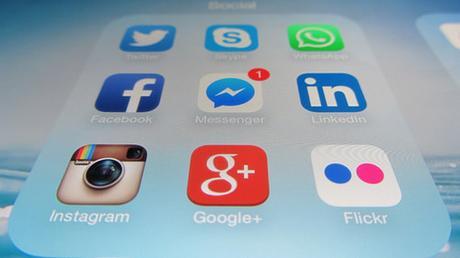 It’s the last holiday weekend of the summer. QUIT WORKING. NOW!!! But because we always deliver, even when we don’t feel like working, here’s the latest edition of “Things You Need To Know This Week.”
It’s the last holiday weekend of the summer. QUIT WORKING. NOW!!! But because we always deliver, even when we don’t feel like working, here’s the latest edition of “Things You Need To Know This Week.”
New Data Shows 67 Percent of Consumers Influenced by Online Reviews
Have you ever wondered how much of an impact Google has on an individual’s purchasing decisions? The folks at SEOmoz decided to find out and set up a study with a group of 1,000 consumers through Google Consumer Surveys.
Of those surveyed, 36 percent said they looked through at least the first two pages of search results. The actual search data indicated it was far less with Google users viewing less than 2 percent of searches below the top five results on the first page. It seems clear from the data that actual consumer behavior differs from self-reported search activity.
Surveyed participants were also asked, “When making a major purchase such as an appliance, a smart phone, or even a car, how important are online reviews in your decision-making?” The results indicated that online reviews impacted over 67 percent of their purchasing decisions. More than half of respondents admitted that online reviews are fairly, very, or absolutely an important part of their decision-making process.
The study also revealed that businesses risk losing as many as 22 percent of customers when as few as one negative article is found by users who are considering purchasing their product. The loss of business increased to 59 percent when as few as three negative articles were returned in a search query, and jumped to a whopping 70 percent with four or more negative articles.
I never buy anything without reading the reviews. It’s also not at all unusual for reviews to change my mind about something I think I am going to purchase. Reviews matter – make sure that a review strategy is something that’s part of your integrated marketing strategies.
Digital Video
Millennials Might Love Digital Video, But Traditional TV Isn’t Dead Yet

The report predicts that there will be 77 million Millennial digital video viewers in 2015, accounting for more than 92 percent of all U.S. Millennial Internet users, and that the total audience will increase by around 1 million annually through 2019.
Even with all the available data, there seems to be no single reason that explains the video habits of U.S. Millennials. I think it’s because video is visually compelling, easier to consume than the written word, entertaining (in many instances), and able to be consumed anywhere and at any time. All good things. There is also an ever evolving selection of video viewing options and a continual shifting of boundaries between traditional television and digital video.
For now though, video is far from dead. Millennials still watch a lot of TV. According to Nielsen, U.S. adults ages 18 to 24 watched more than 18 hours of traditional TV per week, while those in the 25-to-34 age group watched nearly 25 hours per week. While this is less time spent as compared to older generations, it still made up the majority of Millennials’ media time.
Hulu Offers New ‘Commercial-Free’ Option
Hulu has launched a new option that will offer commercial-free video streaming option for $11.99 a month for those users who simply can’t stand watching another ad.
According to the company “At Hulu, we pride ourselves on listening to our customers and giving them the best possible experience,” said Mike Hopkins, CEO, Hulu. “Many of our customers have asked us for a commercial free option, and so today we are excited to introduce just that. Providing more choice for consumers is fundamental to the Hulu experience, in addition to an array of choices in content and devices, our customers can now choose to watch with or without commercials.”
People who are already signed up for the current $7.99 a month option, with ads, can switch to the new commercial-free subscription program for an extra $4 a month. I would definitely opt for this—how about you?
While this new ad free option may sound awesome, there is always the fine print, as explained in Hulu’s FAQ page:
“For a small number of shows, however, we have not obtained the rights to stream commercial free and they are not included in our No Commercials plan. You can still easily access these shows with a short commercial before and after each episode with no interruptions during the episode. Specific shows that still have commercials accessible through the No Commercials plan will be noted throughout the signup, switching, and playback experience. While the list of shows may change, these shows are currently: Grey’s Anatomy, Once Upon A Time, Marvel’s Agents of S.H.I.E.L.D., Scandal, Grimm, New Girl, and How To Get Away With Murder.” It’s interesting to note that all of Shonda Rhimes’ shows are on this “no ad free” list.
Amazon Now Allows Users to Watch Movies ‘Offline’

via Mashable
In big news of the week (at least it’s big news to me), Amazon announced this week that it is now allowing users to download movies and TV shows for offline viewing on its Amazon Video iOS and Android apps. While this feature is common in popular music streaming services, this is the first time a video service has offered offline viewing of content. For frequent travelers like me, this is beautiful music to our ears.
It was only last year that Netflix’s Director of Corporate Communications Cliff Edwards told Tech Radar that offline viewing was “never going to happen,” saying that it’s only a temporary solution for the larger problem of limited Wi-Fi availability.
This feature has been available to users of Amazon-branded Fire phones and tablets, but the rollout for iOS and Android means that substantially more Prime subscribers will be able to take advantage.
Mobile
Facebook Testing New ‘Picture-Picture’ Video Viewing in iOS
It was noted this week that Facebook is experimenting with a new way of displaying online video. Some users recently spotted what has been called “carousel” style viewing in Facebook’s iOS app.
There also appears to be a pop-out, picture-in-picture style function being tested as well. The video pops out as a picture-in-picture, allowing the user to scroll up or down while watching. As always, this will be interesting to keep an eye on.
Facebook to Start Cracking Down On Video Piracy

via Marketing Land
With Facebook’s emergence as a serious competitor in the online video space, many content owners have complained that people stealing content has been responsible for much of Facebook’s video surge. One study reported that pirated video accounted for more than 70 percent of Facebook’s 1,000 most popular videos. That stinks.
This is not a new problem for Facebook, just one they have been especially slow to address, likely for obvious reasons. But the cries of foul play on this practice known as “freebooting” seem to be finally making some impact and moving Facebook off the dime on this.
The thing that is the most annoying is that there is no reason for this to happen. Facebook has just been taking advantage of the surge in video uploads and is doing everything possible to gain more video views. More video views means better data points and more ad sales – it’s that simple. We wrote about this in greater depth in an earlier article, if you’d like a deeper dive on that: The State of Video Advertising and the Role Facebook Plays.
Facebook is playing catch-up to YouTube on this issue, which uses a sophisticated Content ID system that enables video producers to claim their content and either have it automatically removed or stay up and take a share of the advertising revenue that is generated. Facebook doesn’t yet have a system for sharing revenue from video, although it plans to launch a pilot program to do that this fall.
LinkedIn Rolls Out Private Messaging Feature
LinkedIn is starting to roll out its own direct messaging service, similar to what other networks like Twitter, Facebook, Instagram, and Snapchat have had for some time. LinkedIn is starting with a “10 percent ramp to English global members,” so there’s a good chance you won’t notice the update right away.
“We’re excited about concepts like intelligent messaging assistants that can help suggest people you should message or provide you with relevant information about that person before you start a conversation,” wrote Mark Hull, LinkedIn’s director of product management, in a blog post. “Or the possibilities with voice and video to make conversations more compelling.” Hmmmm. We shall see what this looks like. Based on the amount of LinkedIn spam that I get on a regular basis, the thought of private messaging via LinkedIn is not particularly attractive to me at this point. You?
For Instagram, It’s No Longer ‘Hip to be Square’
Instagram is finally making a change to the way photos and videos are posted on the platform that many users thought they’d never see: posted images no longer have to be square. That means you can now share photos and videos without having to crop, whether it’s landscape or portrait format.
That’s for most photos anyway; vertical images are still cropped to a 4:3 aspect ratio, likely because Instagram’s vertically scrolling interface wouldn’t display properly around longer images.
To switch between formats, you just need to tap the icon to adjust orientation. It’ll still appear as a cropped square in your profile grid (to keep things nice and tidy) but will show in the feed of your followers in the correct format.
The company is also updating filters for videos. Instead of using a separate set of effects, videos now support the same selection of presets as stills. You can also now adjust the intensity of these filters. Both the iOS and Android apps are available to download now.
Instagram Improves Direct Messaging With Threaded Conversations
Instagram also announced a set of improvements to its direct messaging feature, which now include threaded conversations and enhanced emojis. That means you don’t have to create a new conversation with someone every time you want to DM them a new photo. That’s kind of cool.
An update to the main feed will allow you to send content from your timeline as a direct message. According to the company, nearly 40 percent of comments include an @mention. Now users can share content directly with their friends by tapping on the new arrow that appears next to the like and comment buttons. This will allow you to share the post as a DM. These updates to Instagram are now available on both iOS and Android.
Google Now Update Offers Better Card Organization and News Suggestions

via Lifehacker
Google has started also started rolling out a new version of Google Now this week that organizes your cards instead of being lumped together like the previous version. The new version has categories like “Updates for you” and “Stories to read.” I’m a long time Google Now user and am excited by this change.
In addition, the new version also improves news suggestions and feature bigger news cards with more text and pictures. You can also now horizontally scroll certain cards like the Nearby Events card, so they take up less space in your Now feed.
Sites That Prompt You to Download Apps to See the Wrath of Google
I don’t know about you, but when you visit a site on your mobile device and all you see is a big pop-up asking you if you want to download their app, I tend to just click away and say forget it. Google apparently understands, and feels your pain.
This week the search giant announced that, as of November 1st, sites with intrusive app download interstitials will be penalized. According to Google, “After November 1, mobile web pages that show an app install interstitial that hides a significant amount of content on the transition from the search result page will no longer be considered mobile-friendly.”
History shows when Google issues a recommendation it’s wise to listen, because usually an algorithm update is soon to follow.
In Case You Haven’t heard, Google has a new logo
Google just unveiled its new logo as well as a whole new branding identity.
Here is Google’s explanation for the change, “It doesn’t simply tell you that you’re using Google, but also shows you how Google is working for you. For example, new elements like a colorful Google mic help you identify and interact with Google whether you’re talking, tapping or typing. Meanwhile, we’re bidding adieu to the little blue “g” icon and replacing it with a four-color “G” that matches the logo.”
Continuing from the Google statement, “This isn’t the first time we’ve changed our look and it probably won’t be the last, but we think today’s update is a great reflection of all the ways Google works for you across Search, Maps, Gmail, Chrome and many others. We think we’ve taken the best of Google (simple, uncluttered, colorful, friendly), and recast it not just for the Google of today, but for the Google of the future.”
According to the company, the new look will roll out across all the company’s products soon.
Miscellaneous
Beagle Puppy Hangs on Car Window
photo credit: Social media via photopin (license)

